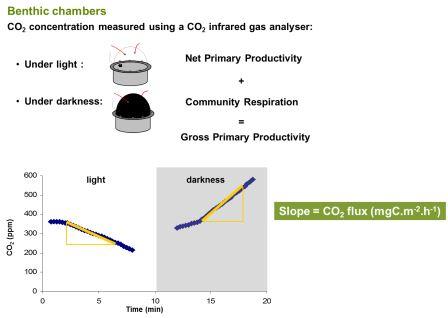As part of the fieldwork campaigns, The University of St Andrews has been measuring the community metabolism of salt marsh and mudflat areas, i.e. the CO2 fluxes due to either primary production or respiration of the mud or marsh and everything living in and on it.
Being able to perform these measurements at the community level is something relatively new in ecology and allows us to take into account any potential interactions between organisms. These measurements are useful for understanding if the habitats we are studying are dominated by producers or consumers of organic matter. This helps understand the role of these communities in the global carbon cycle both qualitatively and quantitatively.

Metabolism measurements are performed at low tide, using a chamber placed directly on the mud or marsh, which means that measurements of the entire community can be performed under natural conditions and with very little disturbance to the organisms. At each quadrat, two incubations are performed one after the other, one under a natural light condition, which allows us to measure net primary productivity, and one under complete darkness, which allows us to measure respiration. Now that the data has been collected at all our quadrats for the two seasons, we can then process the measurements to extract the actual fluxes of carbon produced or respired at each quadrat.
